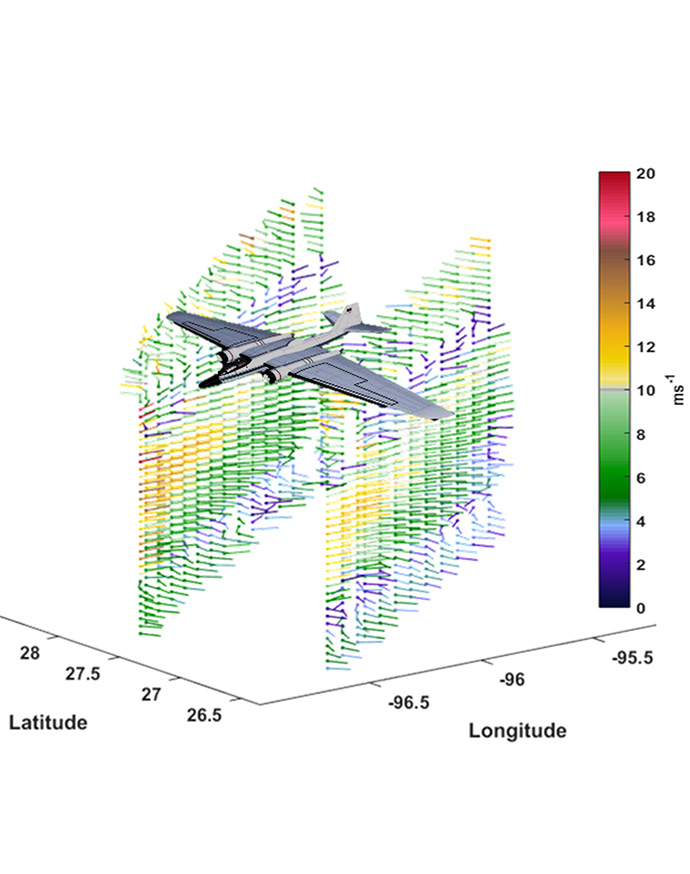
Space-Based LIDAR
Our commerce, economy, safety and security all depend on how accurately we can predict the weather.
For several decades, Ball Aerospace has been on the cutting edge of developing space-based LIDAR technology for new science, tactical and commercial applications – with a proven track record of delivering LIDAR that goes beyond expectations in terms of accuracy, lifespan, and scientific impact.
Ball's deep heritage in wind LIDAR technology development offers scientists and weather forecasters a simpler, more cost-effective path to global wind measurements – resulting in more accurate weather forecasting.
For several decades, Ball Aerospace has been on the cutting edge of developing space-based LIDAR technology for new science, tactical and commercial applications – with a proven track record of delivering LIDAR that goes beyond expectations in terms of accuracy, lifespan, and scientific impact.
Ball's deep heritage in wind LIDAR technology development offers scientists and weather forecasters a simpler, more cost-effective path to global wind measurements – resulting in more accurate weather forecasting.
Filling the Greatest Unmet Need: 3D Winds
Ball continues this heritage by advancing the Optical Autocovariance Wind LIDAR (OAWL) technology, which is expected to produce wind profile measurements over more than 80 percent of Earth’s surface, and providing twice as many measurements as current systems allow while meeting a critical observational need. This will give forecasters access to high quality 3D measurements of horizontal winds for the very first time, increasing our understanding of weather, water and energy cycles, and climate processes and variability.
Ball’s OAWL leverages heritage technologies from the CALIPSO mission, and has flown on NASA-sponsored test flights to push the system closer to a space-based mission. Together with grant funding from NASA, Ball has designed, built and validated multiple versions of the OAWL system, including the ATHENA-OAWL Airborne Demonstrator, the Green-OAWL (GrOAWL) which recently flew on the NASA WB-57 jet.
Ball’s OAWL leverages heritage technologies from the CALIPSO mission, and has flown on NASA-sponsored test flights to push the system closer to a space-based mission. Together with grant funding from NASA, Ball has designed, built and validated multiple versions of the OAWL system, including the ATHENA-OAWL Airborne Demonstrator, the Green-OAWL (GrOAWL) which recently flew on the NASA WB-57 jet.
OAWL Paper: Instrument & Development Pt. 1
Learn more about the motivation, instrument concept, hardware descriptions and more in this paper.
OAWL Paper: Instrument & Development Pt. 2
Learn more about the instrument's initial airborne testing and how performance is projected to operate from space.
ATHENA-OAWL EVI-4 Proposal
International Space Station orbit
ATHENA-OAWL (Atmospheric Transport, Hurricanes, and Extratropical Numerical weAther prediction using the Optical Autocovariance Wind Lidar) will provide more than 10 times more wind profile measurements across the oceans than the current measurement systems extending the useful forecast range by at least four hours.
Why 3D Winds?
3D winds are the horizontal vector component of the 3D wind field. 3D winds are one of greatest observation gaps in the operational weather community.
3D wind measurements would benefit:
3D wind measurements would benefit:
- extreme weather forecasting
- civil aviation
- military operations
- air quality forecasting
- commerce
Deep Heritage in Space-Based 3D Wind Measurement
The first Optical Autocovariance type receiver was built at Ball starting in 2004 under Internal Research and Development (IRAD) funding. In 2008, under an Instrument Incubator Program grant from the NASA Earth Science Technology Office, Ball built the system into a full prototype of the Optical Autocovariance Wind Lidar (OAWL). Since then, Ball has partnered with NASA’s Earth Science Technology Office to further develop the mission concept and perform system validation.

GROAWL
ATHENA-OAWL Airborne Demonstrator
Ball has designed, built and validated multiple versions of the OAWL system. The most recent is a 532 nm Green-OAWL (GrOAWL). GrOAWL underwent airborne testing aboard the NASA WB-57 aircraft in summer 2016. Airborne testing serves to validate this future space-based system for ATHENA-OAWL.
Pictured:
GrOAWL wind speed and direction profiles are derived using two-look line of sight OAWL Doppler measurements acquired over the Gulf of Mexico on 17 June 2016. The wind barb colors indicate the speed, and the barbs are pointing into the direction of the wind (i.e. winds around 4 km are mostly easterly, while winds above 6.5 km are more Northerly). The six slanted wind barb profiles shown in bold indicate speed and direction as measured by radiosondes dropped from the aircraft to validate the lidar measurement.
Image courtesy of Sunil Baidar, University of Colorado
Pictured:
GrOAWL wind speed and direction profiles are derived using two-look line of sight OAWL Doppler measurements acquired over the Gulf of Mexico on 17 June 2016. The wind barb colors indicate the speed, and the barbs are pointing into the direction of the wind (i.e. winds around 4 km are mostly easterly, while winds above 6.5 km are more Northerly). The six slanted wind barb profiles shown in bold indicate speed and direction as measured by radiosondes dropped from the aircraft to validate the lidar measurement.
Image courtesy of Sunil Baidar, University of Colorado
HAWC-OAWL
Ground and airborne based validation
Ball's HAWC-OAWL (High spectral resolution lidar for Aerosols, Winds and Clouds) enables simultaneous Earth science measurements of winds and aerosols required for weather and air-quality forecasting. This instrument will advance the study of impacts of dust and aerosol transport on a global energy and water cycles, air quality and climate.
LIDAR Measured Wind Profiles
Learn more about the missing link in the global observing system.
OAWL's Potential Impact
Evaluating the potential impact of OAWL on numerical weather prediction.
ATHENA-OAWL: Results
Preliminary Results from the ATHENA-OAWL Venture Tech Airborne Mission.
What is GrOAWL?
The ATHENA-OAWL Venture Tech instrument.
GrOAWL Airborne Demonstrator
Mission Concept: System progress and flight plans
OAWL: test-flight history
The history of the 2011 test flight including the final flight data results.
Comparing and Contrasting
The OAWL instrument vs. the coherent detection lidar.
Observing the Earth
How technology is progressing in order to meet the demands of numerical weather prediction.
OAWL Systems Overview
System overview and science goals for OAWL.
